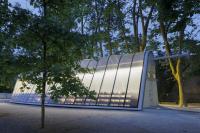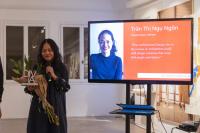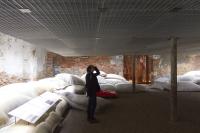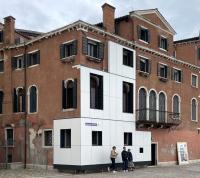treehugger Pavilion
Allemagne
The “treehugger”-pavilion was constructed for and exhibited at the National Garden Show (“BuGa”) in Koblenz, Germany, in summer 2011.It resulted from a research-project on digital design and construction methods that was initiated by Dipl.-Des. Christoph Krause, director of the Chamber of Skilled Craft’s “Center for Design, Manufacturing and Communication” in Koblenz in 2009 to educate students and craftsmen in a kind of digital mason’s lodge scenario. Polygonal and manifold in its appearance, the building aims to formulate a subtle link to the nearby built environment. Positioned next to the basillica St. Castor on a site that was previously used as a parking lot, the pavilion loosely integrates the structure with both the gardening show and the surrounding urban fabric. A facade of printed glass encloses the structure, blurring the interior volume with the exterior environment and superimposing the reflection of the encircling trees onto the unit.
Sustainably constructed using timber plywood, the pavilion was dismantled and relocated. Organized into a single one-directional space, the design features an angular environment that is dictated by a series of simple geometrical operations. Merging three individual programs into one, the layout looks to maximize the spatial distribution, allowing for multiple activities to take place at once. areas dedicated to exhibitions are shielded by tree-like columns that create small cubicles for educational work-stations, while lectures take place in the center of the space. Appearing as a merely haptic space of structural ornaments during the day, the complex modular structure changes completely at night. Reacting to the movement of its users, the environment literally virtualizes the structure and its insides through a series of changing colors and luminosity.
- Architectes
- one fine day. office for architectural design
- Année
- 2011
- Client
- Christoph Krause, Handwerkskammer Koblenz
- Équipe
- FH Trier Fachbereich Gestaltung, Peter Zock, Eva Ziegler, Gabriel Wüstner, Jan Busemeyer, Jan Weber, Frank Stolz
- Tragwerkplanung, Ausschreibung
- osd. office for structural design
- Holzbau
- Ochs Holzbau












